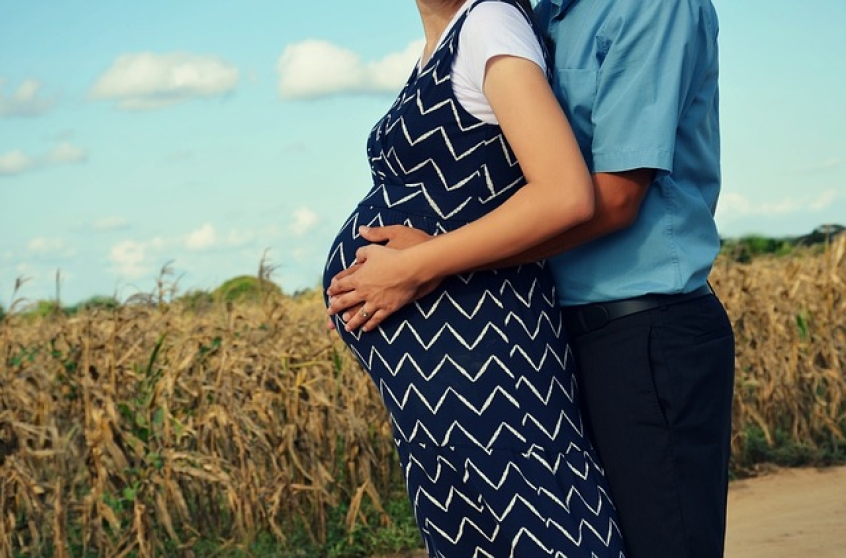
Sperm differ markedly in their swimming performance. This difference not only determines their success at fertilising an egg but may have direct consequences for the resulting offspring, our latest study shows. We found that selecting the longer-lived sperm in the ejaculate of zebrafish results in offspring that live longer and have more offspring compared with their siblings sired by the shorter-lived sperm from the same ejaculate.
For our study, we collected the ejaculate of 26 male zebrafish and divided them into two batches. In one batch, we activated sperm with water and added them immediately to half the eggs of a female, giving all sperm that could move an opportunity to fertilise an egg. In the second batch, we activated sperm but waited 25 seconds until half the sperm could no longer move, allowing only the longer-lived sperm to fertilise eggs.
We reared the resulting offspring to adulthood and measured their lifespan and the number and survival of the offspring they produced throughout life. This design enabled us to directly compare full siblings sired by shorter- and longer-lived sperm from the same male. Offspring sired by "older" sperm not only lived significantly longer but also produced more and healthier offspring.
Interestingly, the effects differed between male and female offspring. Males sired by longer-lived sperm had more and healthier offspring than males sired by shorter-lived sperm, throughout their lives.
The effect of sperm selection on females was more variable. Females sired by longer-lived sperm produced more offspring throughout life, but offspring survival rates declined with age. Females sired by shorter-lived sperm produced fewer offspring throughout life, but the health of the offspring they produced later in life was better than the offspring they produced early in life.
All sperm are not equal
Our research shows that selection, even among perfectly fertile sperm in the ejaculate of a male, has direct consequences for the health of the resulting offspring. Our findings challenge the idea that all sperm that can fertilise an egg are equivalent in siring healthy offspring.
Some of the variation in sperm traits in an ejaculate may be attributed to "errors" during sperm production. But the fact that the variation in swimming duration among sperm in an ejaculate has effects across generations suggests that other mechanisms are involved.
Sperm within an ejaculate not only differ in swimming performance but also in the combination of genes they carry. On average, two sperm produced by one male share 50% of their genes. This is because the duplicate set of genes of the male are distributed more or less randomly between sperm. In an earlier study from our lab, we showed that sperm selected for longevity differ in their genes. This finding provides a direct link between sperm phenotype (how it looks and behaves) and sperm genes and supports the idea that the genetic variation among sperm contributes to the variation in swimming duration.
The role of the genes that a sperm carries in determining sperm swimming performance provides a plausible explanation for the differences we noted in the offspring later in life. Our selection does not simply select for older sperm but for sperm with endurance.
Trade-off
Biologists believe that in ageing there is a trade-off between the number of offspring and lifespan, that is, the more offspring a creature has, the shorter its lifespan, and vice versa. Our results suggest the opposite, namely that offspring that live longer also produce more offspring. Although this needs further investigation, it appears that our selection on sperm swimming duration ends up in selecting for better sperm. By waiting for half of the sperm to die, we get rid of the worst sperm.
If the benefits of longer-lived sperm are so striking, why do shorter-lived sperm even exist? Conditions during fertilisation vary and factors such as the timing between sperm and egg release or water temperature may favour different sperm traits. Longer-lived sperm will be at an advantage if the female delays egg laying by even a few seconds or increases the distance between sperm and eggs.
We still know surprisingly little about the processes occurring between the end of sperm production and the moment of fusion between sperm and egg. Our findings emphasise the need for more studies on this subject as they may have implications for fertilisation technologies used in fertility clinics. These technologies often skip several, if not all, possible steps of selection before fertilisation. Understanding which sperm traits are determining offspring survival and health may help improve the success rate of the existing methods.![]()
Simone Immler, Associate Professor, University of East Anglia This article is republished from The Conversation under a Creative Commons license. Read the original article.













